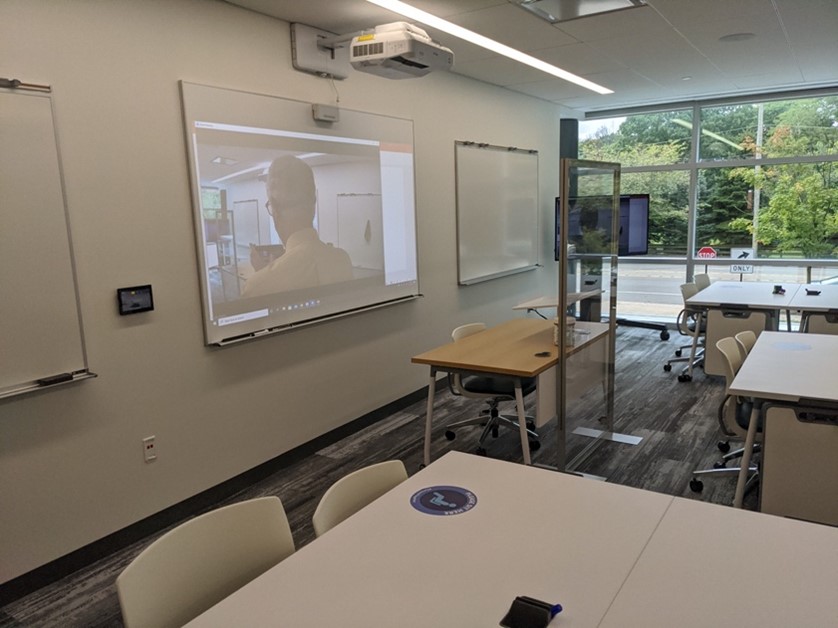Textile education during the 2020 pandemic: experiences in US, South Africa and Germany
DOI:
https://doi.org/10.25367/cdatp.2021.2.p18-33Keywords:
covid, online education, textile educationAbstract
The Covid-19 pandemic has had a major impact on higher education across the world. In this paper we consider how textile education has been impacted and what approaches have been employed to maintain quality education and laboratory experience when traditional methods are not appropriate. This paper considers three different countries – United States, South Africa and Germany. Each has been affected in a different way, has a different sociological makeup, and has developed distinct solutions to the challenge. Methods related to HyFlex, flipped classrooms, and blending learning have been applied by all three institutions. Lectures have been presented as pre-recorded videos, synchronous video conferencing, and hybrid. Similarly, laboratory and studio experiences have been handled through pre-recorded video, guided “at home” experiments, and modified in-person experiences. This paper gives an overview of the laboratory and studio experiences, time spent in preparation, and reaction of the students to remedies. It also addresses best practices from each country in the three continents.
References
Francie Diep and Andy Thomason. UNC Pulls the Plug on In-Person Fall. Will Other Campuses Follow? (August 18, 2020) Available from: https://www.chronicle.com/article/unc-pulls-the-plug-on-in-person-fall-will-other-campuses-follow
University of Notre Dame. Notre Dame Covid-19 Dashboard. Available from: https://here.nd.edu/our-approach/dashboard/
Randy Woodson. Fall Semester Undergraduate Classes Moving Online. (August 20, 2020) Available from: https://www.ncsu.edu/coronavirus/fall-semester-undergraduate-classes-moving-online/
M. A. da Silveira and L. C. Scavarda-do-Como. 1999. Sequential and concurrent teaching: structuring hands-on methodology. IEEE Trans Educ. 42, 2, 103-108.
Brian Beatty. 2014. Hybrid courses with flexible participation: The HyFlex course design. In: Lydia Kyei-Blankson, Esther Ntuli (Eds.). Practical Applications and Experiences in K-20 Blended Learning Environments. IGI Global, Pennsylvania, USA, pp. 153–177.
N. Solihati, H. Mulyono. 2017. A hybrid classroom instruction in second language teacher education (SLTE): A critical reflection of teacher educators. Int. J. Emerg. Technol. Learn. 12, 5,169-180.
B. Manamela. (August 26, 2020). Coronavirus COVID-19 Alert Level 2 Measures in the Post School Education and Training Sector. Retrieved June 15, 2020 from: https://www.gov.za/speeches/minister-blade-nzimande-coronavirus-covid-19-alert-level-2-measures-post-school-education.
J. A. Klemens, C. Pastore, M. Hudson. 2015. Harness student creativity and expertise. In: C. Sweet, H. Blythe, R. Carpenter (Eds.). It works for me, flipping the classroom. New Forum Press, Stillwater, OK.
OPAL. Available from: https://bildungsportal.sachsen.de/portal/
DFN Conference. Available from: https://www.conf.dfn.de/
DokuWiki. Available from: www.dokuwiki.org
Laura Czerniewicz. (March 15, 2020). What we learnt from “going online” during university shutdowns in South Africa. PhilOnEdTech. Available from: https://philonedtech.com/what-we-learnt-from-going-online-during-university-shutdowns-in-south-africa/
Robert M. Bernard, Philip C. Abrami, Eugene Borokhovski, C. Anne Wade, Rana M. Tamim, Michael A. Surkes, Edward Clement Bethel. 2009. A meta-analysis of three types of interaction treatments in distance education. Review of Educational Research 79, 3, 1243-1289.
Barbara Means, Marianne Bakia, Robert Murphy. 2014. Learning online: what research tells us about whether, when and how (1st ed.). Routledge, London, England.
John A. Milligan. 2020. What is the value of synchronous engagement in small remote organic chemistry classes? Analysis of multiple-choice polling data from the COVID-impacted spring semester of 2020. J. Chem. Educ. 97, 9, 3206-3210.
C. J. Bonk, C. Graham (Eds.). 2006. The handbook of blended learning: global perspectives, local designs (1st ed.) Pfeiffer, San Francisco, USA.
Lydia Kyei-Blankson, Francis Godwyll, Mohamed A. Nur-Awaleh. 2014. Innovative blended delivery and learning: exploring student choice, experience, and level of satisfaction in a hyflex course. International Journal of Innovation and Learning 16, 3, 243-252.
D. Michele Jacobsen, Rob Kremer, Mildred L. G. Shaw, Niek J. E. Wijngaards. 1999. The learning web: a technical evaluation of webCT in concurrent classroom and distance education sections of a software engineering graduate course. In B. Collis, R. Oliver (Eds.). Proc. of EdMedia 1999 – World Conference on Educational Multimedia, Hypermedia & Telecommunications. Seattle, WA, USA: Association for the Advancement of Computing in Education, 1340-1341.
Clyde Freeman Herreid and Nancy A. Schiller. 2013. Case studies and the flipped classroom. Journal of College Science Teaching 42, 5, 62-66.
Yanjie Song and Manu Kapur. 2017. How to flip the classroom – “Productive Failure or traditional flipped classroom” pedagogical design? Educational Technology & Society 20, 1, 292-305.
Adekunle Oladipupo Bamiro. 2015. Effects of Guided Discovery and Think-Pair-Share Strategies on Secondary School Students’ Achievement in Chemistry. SAGE Open 5, 1, 2158244014564754.
Nicky Hockly. 2018. Blended Learning. ELT Journal 72, 1, 97-101.

Downloads
Published
How to Cite
Issue
Section
License
Copyright (c) 2021 Chris Pastore, Yordan Kyosev, Ali-Akbar Fassihi, Becky Flax

This work is licensed under a Creative Commons Attribution-NonCommercial-NoDerivatives 4.0 International License.





